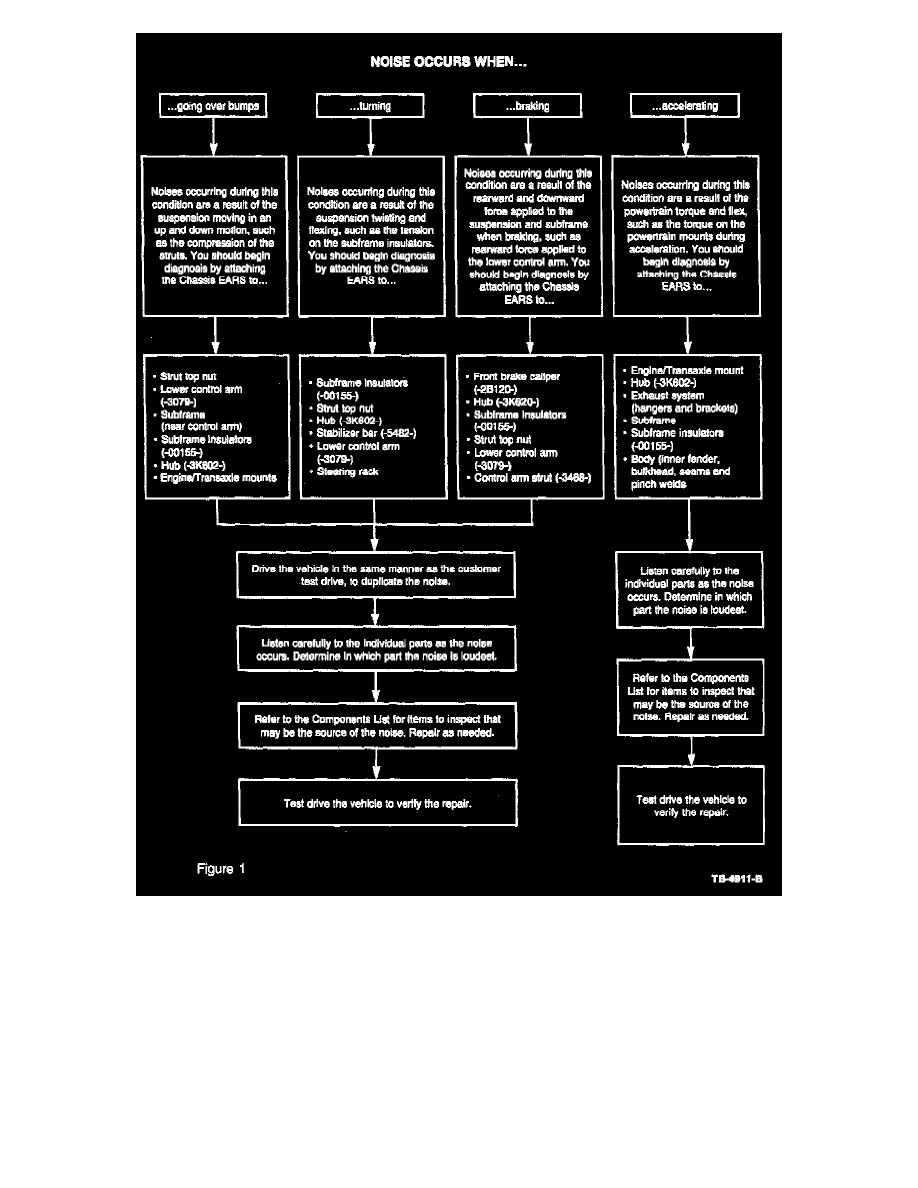Sable V6-183 3.0L DOHC VIN S MFI (1997)

2.
Refer to the flowchart in Figure 1 to determine the conditions that create the noise and the most likely causal parts. The most effective way to
isolate the source of the noise is to use a Rotunda Electronic Chassis Ear (107.R2101). The Chassis Ear provides six (6) individual microphones
that can be remotely mounted on the most likely noise sources. You can then switch through the individual channels to identify the part creating
the noise. If you do not have a Chassis Ear, you can get similar, less effective results by using a conventional stethoscope and clamping vacuum
lines to the most likely noise sources.
3.
Refer to the following Vehicle Component List for key inspections to perform on the suspected causal part.
Vehicle Component List
Refer to this Vehicle Component List for key items to inspect when a part has been identified as the most likely source for the noise. Inspect the part and
perform repairs as needed. The type of noise possible from the part is identified within the () brackets and are as follows:
^
C = Clunk
